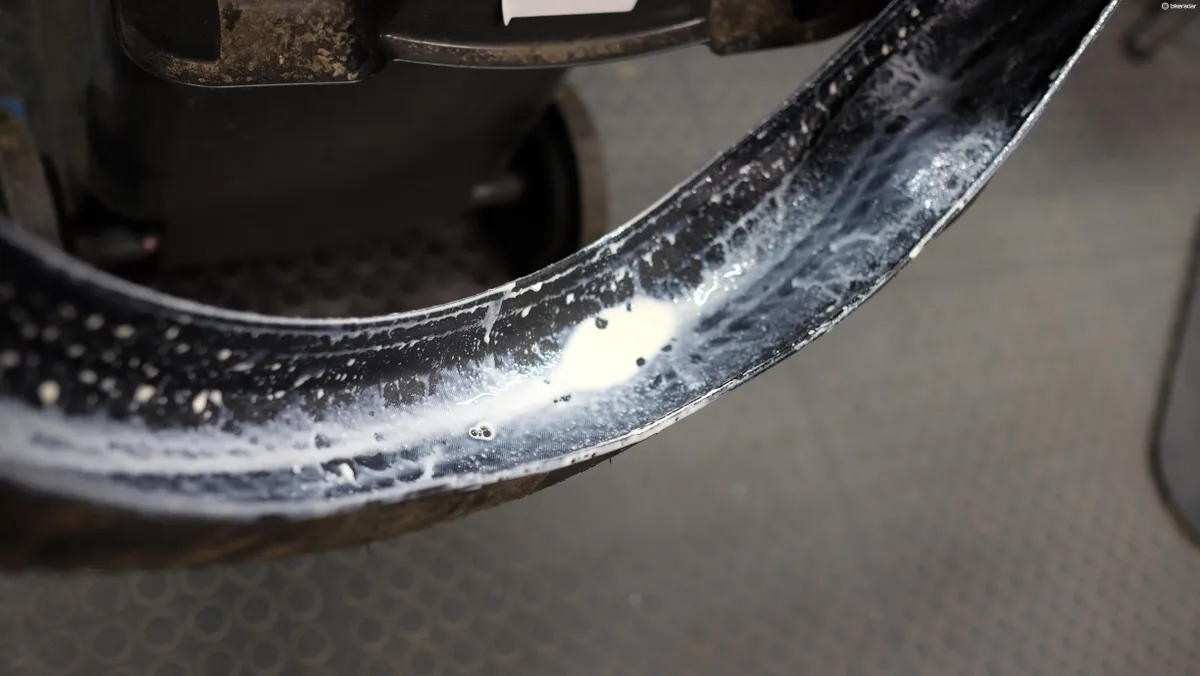One of the most common questions that crops up on the BikeRadar forum is: 'what’s the first thing I should upgrade on my new mountain bike?'.
This prompts all kinds of responses. Wheels are often mentioned, due to the understanding that rotational weight has a bigger effect on a bike's handling than static weight.
In reality, the difference between these two types of weight is negligible, at least in the context of cycling. What does have more of an impact is unsprung weight — the parts of your bicycle that are not supported by the fork and rear shock, such as wheels, tires, inner tubes, axles and suspension fork lowers. Excess weight in this area can hamper your bike's suspension performance, and therefore handling.
However, wheels are an expensive upgrade, especially if you've just forked out for a new bike, and there are other areas where a smaller outlay will bring you big performance benefits. Suspension forks and/or rear shocks tend to crop up in upgrade discussions, as budget units tend to be heavy and poorly controlled, but replacing these can be very expensive and a bit of a minefield for the uninitiated.
When it comes to cheaper options, people will generally mention things like lighter quick-release skewers – okay, the latest carbon/titanium/alloy options may look bling but a semi-enclosed Shimano QR still offers just about the best performance – and talk about titanium bolts – fine if you’re a sponsored racer and get them for free, but a good way of blowing lots of cash for minimal weight savings for the rest of us.
Taking control
So what’s the answer? Saving weight isn't the be-all and end-all. Rider weight is so much higher than bike weight that saving a few grams here and there makes very little difference, and even if you manage to save a few pounds, it's only on the climbs that you'll really notice the change. Comfort and performance upgrades will make a much more significant difference.
Ditch an uncomfortable saddle
An uncomfortable saddle should always be the first thing to go – although make sure you do a few long rides first, because seats that feel hard for the first couple of miles often bed in a bit and/or provide excellent support on longer jaunts.
Some companies such as WTB now offer demo programmes where you can try out different perches. After that, the first things we tend to swap on bikes that come in for testing are handlebars, stems and tyres.

Cockpit changes – bars, stem and grips
Many mountain bikes come equipped for cross-country riding or, at the budget end of the market, a mix of on- and off-road riding. That means a narrower handlebar (saves weight and gives a beginner-friendly upright ride position), longer stem (puts weight over the front of the bike for improved climbing, at the expense of some downhill confidence) and either semi-slick or low-tread tyres (roll fast on road or dry trails but don't grip well in corners or mud). If you plan on tackling more technical terrain, a shorter stem, wider bar and grippier tyres will make a big difference.
A stubby stem will speed up your steering and help you get your weight back on steep downhills. The length you choose should depend on what type of riding you're into – 60 to 90mm should be fine for cross-country where there's a fair bit of climbing (any shorter and it can be difficult to get enough weight over the front wheel on climbs), while those intending to spend more time heading downhill than up can get away with something shorter.
A wider bar, meanwhile, will give you more control – compared with a narrower pipe, you need to move your hands further to turn the front wheel by the same amount. Many riders say it also aids breathing while climbing, as your arms are further apart and thus not restricting your chest.
Don't go too wide for your height though – anything over 700mm will make a difference, and unless you're over 6ft and into pretty radical riding, 800mm will be overkill. Also bear in mind that if you tend to ride tight, tree-infested trails, a narrower bar may be easier.

Think about your grips, too – different shapes, sizes and rubber compounds suit different shaped hands and riding styles. Lock-on collars add security, but the grips often have a stiff plastic core, so many riders still swear by traditional all-rubber grips and use wire or hairspray to make sure they don't slide off.
Tyre choices
Next on the list should be tyres. Even if your bike came with 'name brand' rubber, the tyres may well be plasticky OEM ones (cheaper versions made to be sold with full bikes) rather than more grippy aftermarket ones.
Beware of this when buying upgrade tyres online, too – if a price seems too good to be true, it may well be an OEM product.

What tyre you go for depends on what type of riding you'll be doing (downhill/all-mountain/cross-country), what the terrain's like where you'll be riding (rocky/dusty/muddy) and what your priorities are when it comes to durability and grip – in general, the more durable a tyre, the less grippy it is.
Don't buy a tyre just because it's light, or you're likely to be plagued by punctures and unpredictable losses of traction. Tyre volume and pressure can also make a big difference.
Drivetrain upgrades
Mountain bike drivetrains have seen a lot of progression over the last few years. The rise of single ring transmissions and wide-range cassettes has made for a generation of simpler, quieter machines that are less likely than ever to drop a chain. Drivetrains have also moved up a cog, quite literally, to offer 11 cogs at the cassette rather than the previous 10 – with SRAM's recently announced Eagle upping the ante with a 12-speed cassette.
Clutch-equipped rear derailleurs were introduced a few years ago now and they’re pretty much commonplace among new bikes. Used on single and multiple front chainring setups, a clutch-equipped rear derailleur allows the sprung lower pulley cage at the rear derailleur to be ‘locked out’ below its parallelogram linkage, dramatically reducing chain movement.

From a rider’s perspective, that means a quieter bike with improved chain security. Another technology that is now almost commonplace with today's mountain bikes is the narrow-wide chainring. Used for single-ring specific chainsets, narrow-wide chainrings feature teeth that are arranged in a way that drastically increases chain security.
Narrow-wide chainrings and wide-ratio cassettes go hand in hand and are now fitted as standard equipment for single-ring specific drivetrains from SRAM and Shimano.
Imitating the wider-range cassettes introduced by SRAM’s X series of 1x transmissions a few years ago, many riders are now choosing to upgrade to wide-range gearing and a new generation of wide-range cassettes are making this easier than ever.
For a relatively small outlay, riders using regular 10-speed gearing can now switch to a wide-ratio cassette that – unlike SRAM’s 11-speed kit – will work with a regular Shimano freehub body. Sunrace produces a couple of cassettes (the MS3 and MX3), which, at a similar cost to a cheap replacement part from Shimano or SRAM, will offer a spread of up to 11-42t.

Another way of getting a wide-range transmission, albeit one with a less even spread, is to use a ratio expander. Rather than replace an entire cassette, the ratio expander normally switches out a cog at the rear block and replaces it with a larger crawler cog at the top of the cassette. A typical and popular ratio expander option is Hope’s T-Rex expander, which allows for riders with an existing 11-36t 10spd cassette to get an 11-40t range. Expander kits that offer a wider range are also available but these normally also require modifications to the lower cage of the rear derailleur.
Tubeless conversion

A tubeless setup should eliminate the common occurrence of pinch flatting (when an inner tube is pinched between the rim and tyre). A tubeless configuration also allows you to run lower pressures for increased traction and feedback while rolling resistance will also be reduced.
Ditching the tubes has never been cheaper or easier thanks to an increase in tubeless ready rims and tyres. Most but not all tyre and rim combinations can work without tubes thanks to the right equipment, some know-how and a bit of patience. Complete tubeless conversion kits can be purchased from various suppliers but we’d recommend kits from Stan’s or Effetto Mariposa.
For detailed instructions on ditching tubes check out BikeRadar’s video guide to tubeless conversion.
Check out our top 5 MTB upgrades for more ideas


